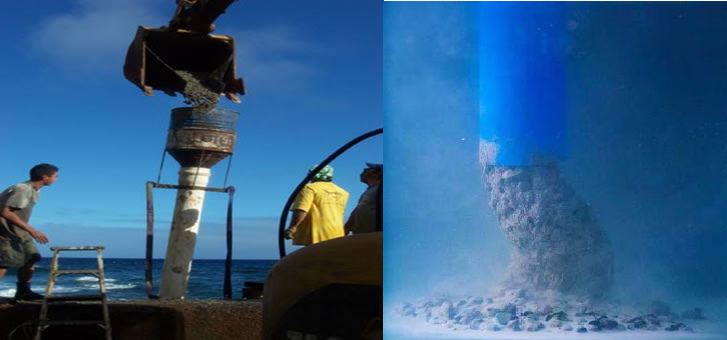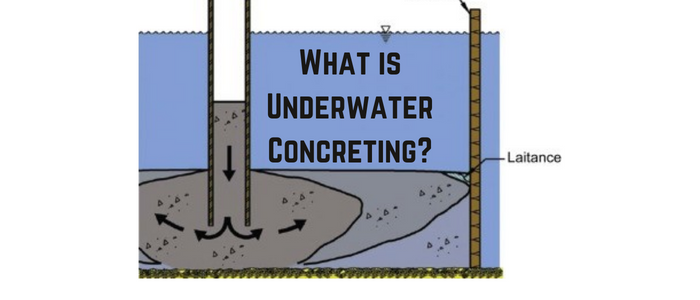What is Underwater Concreting?
Underwater concrete has been used for a long time now. The act of placing fresh concrete under water is called “Underwater Concreting”. As you can imagine, underwater concreting will impose multiple restraints on the construction compared to casting concrete in normal applications.
Underwater Concrete
The underwater concrete (abbreviated as UWC) is thus a special high-performance type of concrete (in terms of strength, workability and durability) that is used in concrete that is serving in special locations such as bridge piers, harbours, sea and river defences, offshore oil fields, foundations in soil with high water levels.
A key feature for underwater concrete is that it does not require the isolation of water (the old-style method), meaning that you can cast concrete under water directly. This of course significantly reduce the expected cost of construction. Also, interruptions does not occur frequently and construction will proceed quickly.
Look at the below image:

On the left, workers are casting concrete into some sort of pipe and on the right, concrete appears flowing under water.
Underwater concrete necessitates particular considerations for choosing the best materials, specific equipment for quality control, and rigorous monitoring during all stages of construction, including design and building processes
Properties of Underwater Concrete
There are some features that characterizes underwater concrete in terms of the mixture design:
- The content of cementitious materials falls in the range of 400 to 600 kg/m3
- Water-to-powder ratio from 0.35 to 0.46.
- Sand to Aggregate ratio between 0.42 to 0.5
- Superplasticizers are usually employed in the mixture with a dosage of 0.05%-2.65% to increase the fluidity and allow for the reduction of water-to-cement ratio and thus, higher strength.
- There is a risk that concrete cast underwater segregate and washout. That is a special type of admixtures called “anti-washout admixtures” is added to the mix to enhance its yield value and viscosity with a dosage between 0.005% and 0.265% .
In terms of concrete properties, underwater concrete:
- is highly flowable concrete that can flow and spread only under its own weight.
- can achieve good compaction without the need for vibration.
- has high strength.
- sets and hardens rapidly.
- has low tendency to segregation and bleeding.
The technology for underwater concrete has advanced significantly in recent years, making it possible to proportion the mix to assure excellent fluidity and great resistance to washout and segregation.
Methods of Underwater Concreting
There are multiple methods that can be used for underwater concreting; namely:
- Tremie method
- Placing in de-watered caissons or cofferdams
- Bucket placing
- Using bags
- Pre-packed concrete
Each method has each own advantages and limitations. We will cover each one in a separate post.
Read Also:
